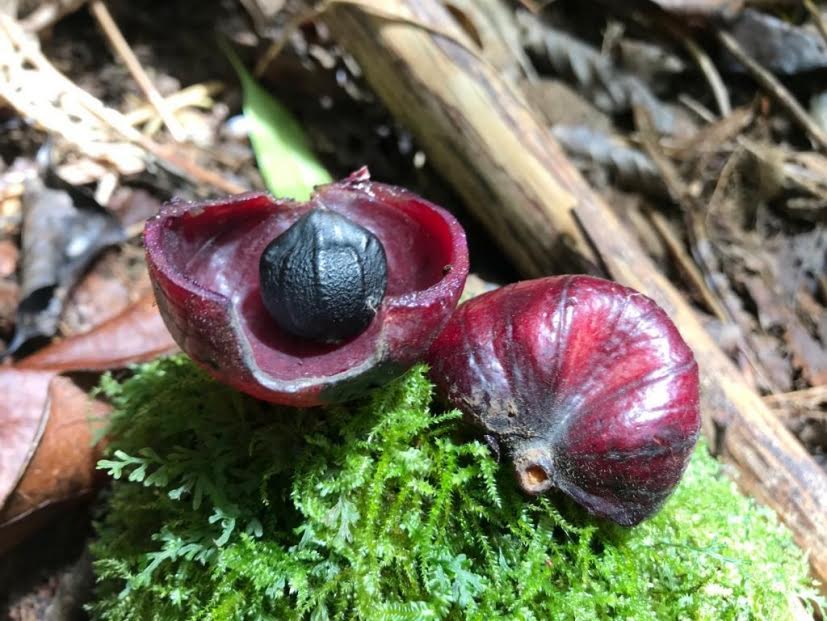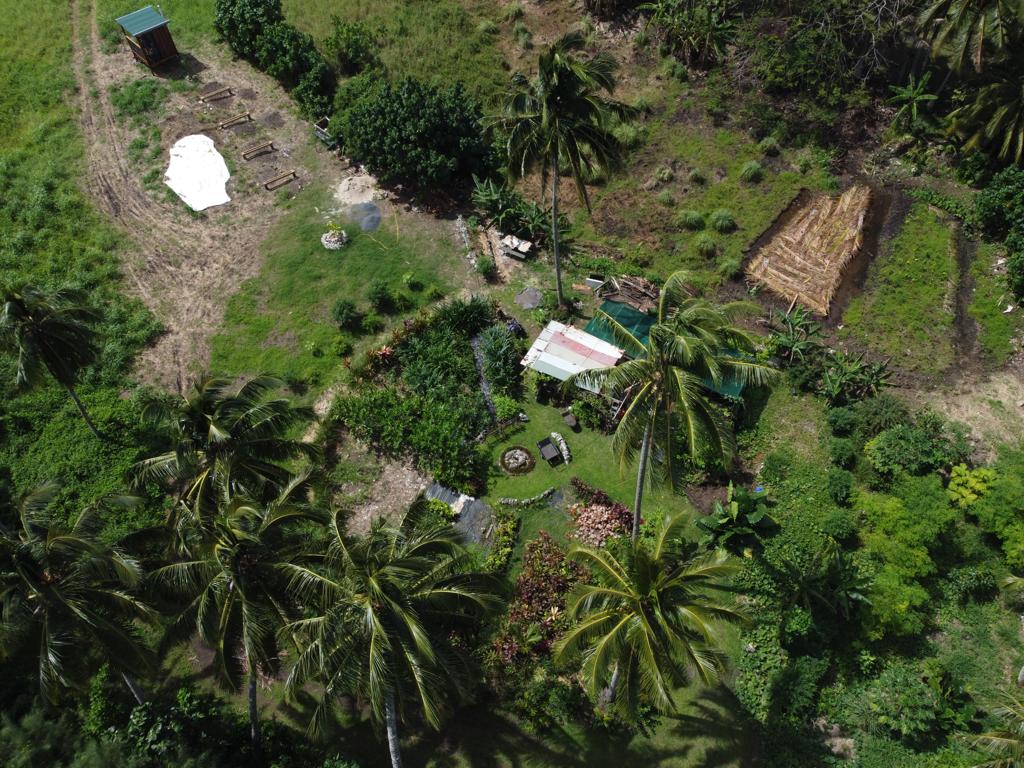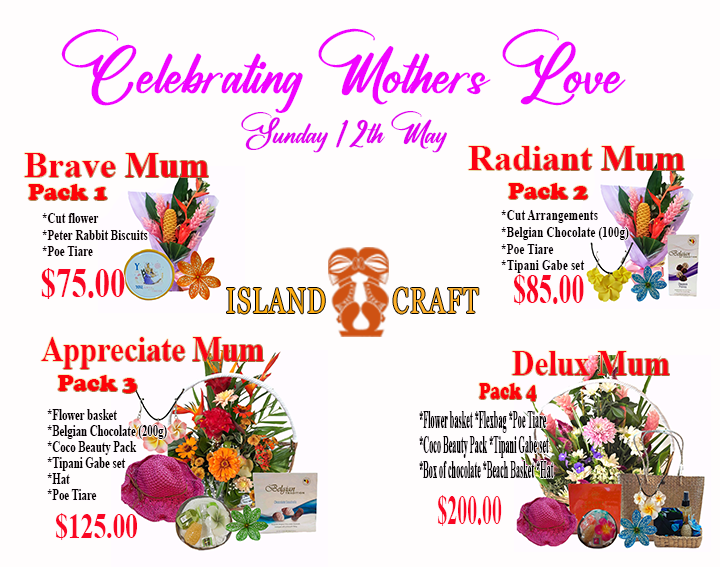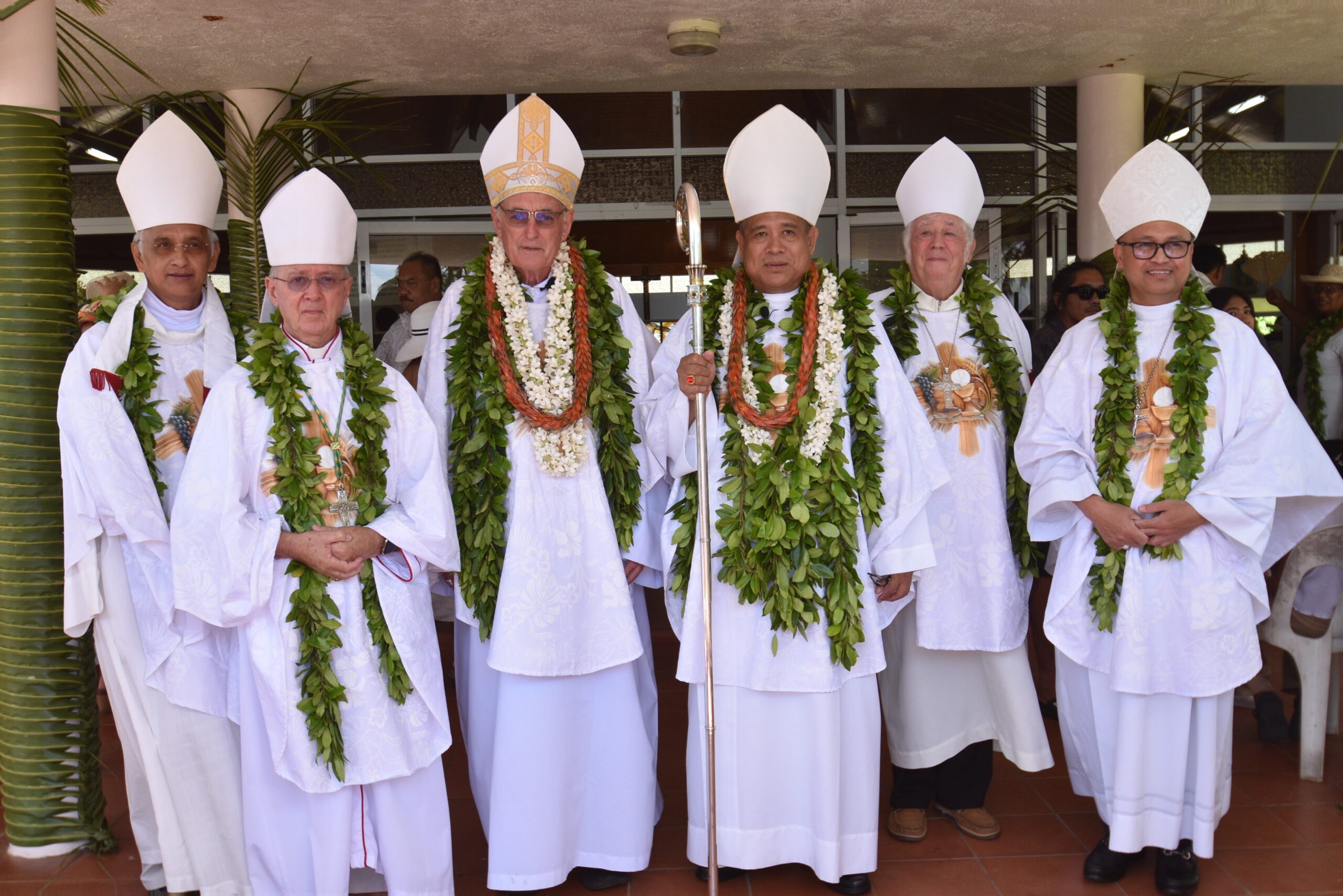Reviving Rarotonga’s native flora
Monday 16 October 2023 | Written by Joanne Holden | Published in Features, Weekend

The seed of the tūrina (hernandia moerenhoutiana) or “mountain lantern tree”, cut in half to show the fruity lantern protecting the seed that rattles inside. Photo credit: Brennan Panzarella 23101550
Rarotonga’s native flora has nearly disappeared from the island’s coast, a 150-metre ascent into the mountains required to find thriving examples of its original ecosystem. The only other place is a nursery in Matavera.
Protecting and enhancing Rarotonga’s biodiversity for future generations is the drive of a conservation group cultivating native seeds.
For the past two years, Muri Environment Care (MEC) has been collecting seeds and cuttings during trips into the mountains and from coastal remnants of native plants – attempting to grow them in a nursery tucked behind Pa Ariki’s Takitumu Palace.
“We look at each plant species as a unique project,” MEC ecologist Brennan Panzarella says.
“We change things such as the soil mix, how much water they get, and the amount of direct sunlight to see what each plant likes best.
“This tailored approach not only boosts our restoration capabilities, but also deepens our understanding of the varied and intricate need of each native species.”

The nursery is going through a lot of change at the moment. Photo; Muri Environment Care. 23151016
The nursery houses “a small fraction” of the more than 100 plants native to Rarotonga, Panzarella says.
Panzarella says the idea for the project was sparked during trips to the island’s streams.
“We saw the streams were an opportunity to learn more about the native ecosystems, but we couldn’t really find – other than in the bush – a coastal stream section that had natives on it.”
MEC reached out to Cook Islands Natural Heritage Trust (CINHT) director Gerald McCormack and the late Joseph Brider for a list of plants they thought would grow well along the streams, and that they should be seeking out.
“I spent a lot of time in the mountains with Joe,” Panzarella says.
“He started the search for native plants, but more for learning about them. They weren’t trying to collect the seeds or grow them.”
McCormack says Panzarella is the first person to tackle reviving native plants on a large scale with he and Brider, who passed away in May 2022, making a “good team”.
He says of the more than 1000 plant species on Rarotonga, about 130 were native and about 65 were Polynesian-introduced. The rest were brought to the island in the 200 years since the missionaries arrived.
McCormack says Rarotonga boasts one of the most “pristine” native forests of the tropical South Pacific, beginning half-way up the mountains or about 150 metres above sea level, he says.
“If you go on the cross island walk, by the time you get to the stream before you go up the ridge, you’re in native forest.”
McCormack says trees introduced to the island in the 1980s – including cecropia, African tulip, albizia, and hibiscus – have taken over the original fernlands on the lower part of the mountains, and continue gradually creeping upwards.
“They can’t actually invade the forest itself directly – but when there is an opening, like a slip or anything like that, they’re the first thing to be there,” he says.
“On the other hand, we’ve only lost two native shrubs, that we know of, since vegetation was recorded here in 1899. One of them is the Rarotonga acalypha, and the other one is a pilea.”
Panzarella says the island’s coastal area is “further from what it once was” than the mountain area.
“That’s due to people living down here, people working down here, people making money down here.”
McCormack raises doubts about whether native mountain species can thrive on the lowlands.
“They’re not terribly amenable, but Brennan’s got the dedication and it’s really good that he’s trying.”
Panzarella says one of the questions MEC wants to answer with the nursery is, “Are these plants in the mountains because they prefer the conditions up there, or are they in the mountains because they’re refugees?”
“Even through our failures, we continue to learn. If certain species never germinate, or if we never figure out how to nurture them in our nursery, that's okay.
“Our project epitomises trial and error – with a heavy emphasis on error – and failure is the best teacher.”
One mountain species which has seen success in the nursery is tūrina, otherwise known as the mountain lantern tree – the preferred nesting tree of native bird kākerōri.
"The theory is that this is in part due to the large leaves acting as umbrellas, sheltering the young birds from rain and sun,” Panzarella says.
“Envisioning a scenario where we might want to entice kākerōri back to the lowlands – where they once prospered – using streams as natural corridors, prioritising the planting of tūrina and implementing rat traps along these pathways might hypothetically facilitate their return.
“Despite tūrina being seldom seen in the lowlands, it is thriving in the MEC nursery stock garden – hinting that, like the kākerōri, its mountain presence might be more of a refuge than a preference.”
Other nursery successes included the pō’utukava, which MEC has been planting along Parengaru stream, and the ‘ano tree or beach gardenia.
“At times, germinating native seeds feels like witnessing real-life magic,” Panzarella says.
“A seed, sometimes smaller than a grain of sand, can – with care and optimal growing conditions – transform into a colossal creature that supports entire ecosystems.”
Two of the latest additions to the nursery were native seeds collected during a “fruitful hike” involving Panzarella, Rose Winters, and Kas Silk on August 6.
One group of new seeds is from the toi tree, a rare find located “thanks to the memories and guidance from Gerald”, Panzarella says.
“Their germination remains unconfirmed, hopefully they are slow starters rather than non-viable seeds.”
The other group of seeds is alstonia costata, which Silk “skilfully dried and extracted” before sowing and germinating them.
Panzarella says the project is built on the “shoulders of giants” – including Cook Islanders who were “wise in preserving a rich array of native and wild places”, and CINHT’s Biodiversity and Ethnobiology Datebase.
“Without their detailed work, our project would be much harder and longer.
"Having easy access to such important information has been key in moving our work forward with clear direction and purpose.”
Panzarella encourages those who are interested in being part of reintroducing plants along Rarotonga’s streams and coastlines to get in touch.









































